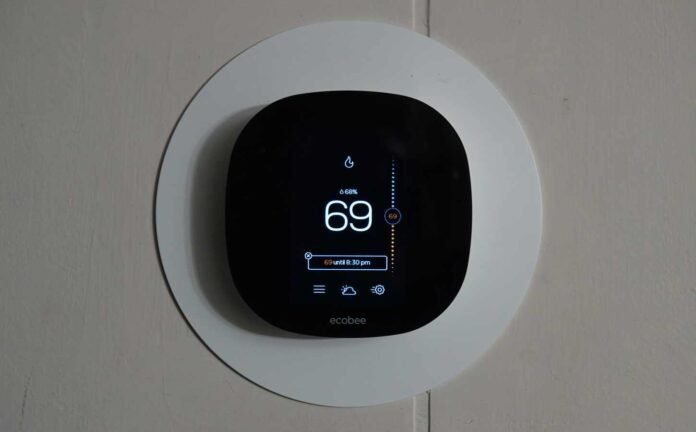Quality sleep is essential for maintaining good health and well-being.
While many factors contribute to a good night’s rest, the temperature of your sleep environment plays a crucial role. Understanding the best temperature for sleep and how to achieve it can significantly enhance your sleep quality.
This article looks into the science behind sleep temperature, its impact on sleep, and practical tips to create the ideal sleep environment.
The Science Behind the Best Temperature for Sleep
Our body’s core temperature naturally decreases as we prepare for sleep and continues to drop throughout the night. This drop in temperature helps to initiate and maintain sleep. According to the National Institute of Neurological Disorders and Stroke, our circadian rhythm, the body’s internal clock, regulates this temperature drop, signaling that it is time to sleep.
Optimal Temperature Range:
Research suggests that the best temperature for sleep is between 60 and 67 degrees Fahrenheit (15.6 to 19.4 degrees Celsius). This range supports the body’s natural thermoregulation process, facilitating a deeper and more restful sleep. Temperatures outside this range can disrupt sleep, making it harder to fall asleep or causing frequent awakenings.
- PLEASE NOTE: Your Ecobee3 thermostat will come with an original wall plate. Unlike the original equipped bracket, our gorgeous decorative wall plate perfectly creates a modern and stylish look, covers up the previous hole or mark. Elegant matte surface is attractive.
- DESIGN FOR: Our wall plate cover works with Ecobee3 Lite Thermostat and Ecobee3 Thermostat. Please check your Thermostat firstly before buy it.
- EASY INSTALLATION: Plate cover can be easily installed. No need to paint or do any remodeling work to install the plate.
- THE PREMIUM MATERIAl: Made from hard, durable Polycarbonate, are designed in house from scratch, Fingerprint Resistant with long longevity.
- PACKAGE: Including 6.7*6.7 inches (17*17 CM) wall plate and screw sets. Note: The Ecobee3 Lite and Ecobee3 Thermostat is not included.
As an Amazon.com Affiliate, we may earn a small commission if you buy from a link within this page.
Impact of Temperature on Sleep Quality
Maintaining the right sleep environment temperature is essential for several reasons:
- Thermoregulation: The body’s ability to regulate its core temperature is crucial for sleep initiation and maintenance. A cooler room helps the body reach and sustain the lower core temperature needed for optimal sleep.
- Sleep Stages: Cooler temperatures promote the progression through the various sleep stages, including REM sleep, which is essential for cognitive function and overall health. Warmer temperatures can lead to restlessness and reduced time spent in restorative sleep stages.
- Comfort and Restfulness: A comfortable sleep environment enhances overall sleep quality. Being too hot or too cold can cause discomfort, leading to disturbed sleep and reduced sleep efficiency.
Practical Tips to Achieve the Ideal Sleep Temperature
Creating the perfect sleep environment involves more than just adjusting the thermostat. Here are some practical tips to help you maintain the ideal sleep temperature:
- Use a Programmable Thermostat: Set your thermostat to lower the temperature in the evening and maintain it throughout the night. A programmable thermostat can automatically adjust the temperature based on your schedule.
- Choose Appropriate Bedding: Opt for breathable and moisture-wicking materials such as cotton or linen for your sheets and blankets. Layer your bedding so you can easily adjust your comfort level during the night.
- Invest in a Quality Mattress and Pillows: Select a mattress and pillows that provide good ventilation and support. Memory foam mattresses with cooling technology can help regulate body temperature.
- Wear Comfortable Sleepwear: Choose lightweight, breathable fabrics for your sleepwear. Avoid heavy or restrictive clothing that can trap heat and cause discomfort.
- Use Fans or Air Circulators: Fans or air circulators can help maintain airflow and a consistent temperature throughout the room. They can also provide white noise, which can be soothing and help mask other disruptive sounds.
- Block Out Heat Sources: Keep curtains or blinds closed during the day to block out heat from the sun. This can help maintain a cooler room temperature in the evening.
- Stay Hydrated: Drink plenty of water throughout the day to stay hydrated. Dehydration can affect your body’s ability to regulate temperature effectively.
Conclusion: Best Temperature for Sleep
Achieving the best temperature for sleep is a key factor in improving sleep quality and overall health. By understanding the science behind sleep temperature and implementing practical tips to optimize your sleep environment, you can create a comfortable and restful space conducive to a good night’s sleep. Experiment with these strategies to find what works best for you, and enjoy the benefits of better sleep.
For more information on optimizing your sleep environment, visit the National Institute of Neurological Disorders and Stroke and the National Sleep Foundation.
Sources:
Szymusiak R. Body temperature and sleep. Handb Clin Neurol. 2018;156:341-351. doi: 10.1016/B978-0-444-63912-7.00020-5. PMID: 30454599.
Okamoto-Mizuno, K., Mizuno, K. Effects of thermal environment on sleep and circadian rhythm. J Physiol Anthropol 31, 14 (2012). https://doi.org/10.1186/1880-6805-31-14
A Raj, M Ruder, H M Rus, L Gahan, B O’Mullane, S Danoff-Burg, R Raymann, 1214 Higher Bedroom Temperature Associated With Poorer Sleep: Data From Over 3.75 Million Nights, Sleep, Volume 43, Issue Supplement_1, April 2020, Page A464, https://doi.org/10.1093/sleep/zsaa056.1208
Creating the Ideal Sleep Environment: A Guide to Optimizing Your Bedroom

Creating the ideal sleep environment, which includes the best temperature for sleep, fosters restful and rejuvenating sleep entails a comprehensive approach that addresses multiple aspects of your bedroom.
It is essential to evaluate and adjust the visual appeal and functionality of your sleep space, control lighting to support your circadian rhythm, maintain an ideal room temperature, ensure clean air quality, minimize noise disruptions, and consider the role of aromatherapy.
Continue reading: Creating the Ideal Sleep Environment
How Blue Light Affects Sleep: Tips for a Restful Night in Our Tech-Driven World

This article explores how blue light affects sleep and sleep quality, offering actionable, tech-friendly bedtime tips to harmonize your digital life with your sleep needs.
The balance between technology and health is delicate, especially concerning “blue light and sleep.” By understanding the effects of blue light and implementing tech-friendly strategies, it’s possible to enjoy the benefits of our digital devices without compromising our sleep.
Continue reading: How Blue Light Affects Sleep




